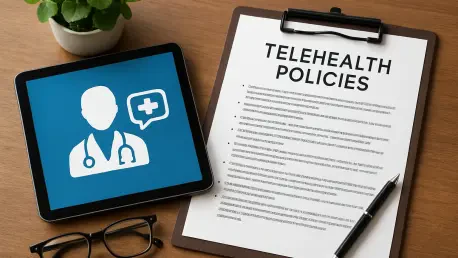What happens when a vital healthcare lifeline vanishes overnight for millions of Americans, leaving them stranded without essential medical access? Picture a senior citizen in a rural town, unable to travel long distances for medical care, suddenly cut off from virtual doctor visits due to a bureaucratic deadlock that could have been prevented. As of this year, a federal government shutdown has triggered the expiration of critical telehealth policies under Medicare, plunging patients and providers into uncertainty. This seismic shift, rooted in congressional gridlock, threatens to unravel years of progress in accessible healthcare. The story of this lapse reveals not just a policy failure, but a human crisis demanding immediate attention.
The Stakes of Virtual Care in a Shutdown Era
The importance of telehealth cannot be overstated in today’s healthcare landscape. Since its rapid expansion during the public health emergency, virtual care has become a cornerstone for millions of Medicare beneficiaries, particularly seniors and those with chronic conditions. It has shattered barriers, enabling consultations from the comfort of home, regardless of geographic location. With the government shutdown halting funding, these temporary flexibilities—once a beacon of innovation—have lapsed, exposing a glaring vulnerability in the system. This is not just about technology; it’s about ensuring equitable access to life-saving care for some of the most vulnerable populations.
A Sudden Cutoff Shakes the Healthcare System
On October 1 of this year, as partisan disagreements stalled federal funding, temporary telehealth waivers under Medicare expired without warning. These policies had allowed patients to connect with doctors via video calls, bypassing the need for in-person visits that are often burdensome or impossible. The lapse has left millions in limbo, with seniors and disabled individuals at particular risk of delayed treatments. Beyond individual hardship, the broader healthcare ecosystem feels the strain as trust in consistent care delivery erodes under the weight of political inaction.
Providers Caught in Financial Limbo
Healthcare providers now face an impossible dilemma due to the policy lapse. Without assurance of reimbursement from the Centers for Medicare & Medicaid Services (CMS), many hesitate to offer telehealth services, fearing financial losses. Igor Gorlach, a legal expert at King & Spalding, notes that while some may submit claims hoping for retroactive payment, the risk remains high. This uncertainty stifles innovation and forces clinics to divert resources toward contingency plans, such as arranging in-person care or partnering with other facilities, at a significant cost to both time and money.
Patients Grapple with a New Reality
For Medicare beneficiaries, the impact is deeply personal. Many who relied on virtual care for mental health support or routine checkups now face the daunting prospect of navigating in-person alternatives, if they’re even available. Rural patients, in particular, suffer as long distances to medical facilities compound their challenges. Chris Adamec of the Alliance for Connected Care warns that delayed care could lead to worsening health outcomes, a ripple effect that may burden emergency services down the line. The human cost of this lapse is a stark reminder of what’s at stake when policy fails to keep pace with need.
Advocacy Pushes for Urgent Solutions
Voices across the healthcare sector are uniting in a call for resolution. Advocacy groups like ATA Action are lobbying congressional leaders to reinstate the expired flexibilities and secure retroactive reimbursement for services provided during the shutdown. Policy expert Tom Leary from HIMSS critiques the recurring “telehealth cliff,” where last-minute legislative fixes create a cycle of disruption, and argues for a permanent framework. These stakeholders emphasize that bipartisan support for telehealth exists, yet the persistent delays signal a disconnect between public need and political action. The frustration is palpable as the community demands stability over stopgap measures.
Navigating the Storm: Practical Steps Amid Crisis
While awaiting legislative relief, actionable steps can help mitigate the fallout. Patients are encouraged to reach out to their providers to explore state-funded telehealth options or arrange in-person visits where feasible, despite the challenges. Providers, meanwhile, should meticulously document any virtual services rendered during this period, preparing for potential retroactive payments while maintaining clear communication with patients about coverage uncertainties. Advocacy efforts must also intensify, with citizens urged to contact lawmakers to push for swift policy reinstatement. These measures, though temporary, offer a lifeline until a lasting resolution emerges.
Reflecting on a Path Forward
Looking back, the telehealth crisis unfolded as a stark lesson in the fragility of healthcare policy during governmental gridlock. The abrupt lapse of virtual care access exposed systemic flaws that left patients stranded and providers burdened. Moving ahead, the focus shifted toward crafting enduring solutions, with stakeholders advocating for permanent legislation to prevent future disruptions. A renewed commitment from lawmakers emerged as essential, alongside innovative approaches to integrate telehealth seamlessly into Medicare. The path forward demanded not just reaction, but proactive reform to safeguard access for all who depended on this critical service.









